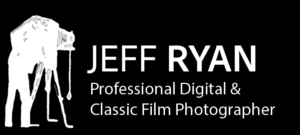OTTAWA PROFESSIONAL PHOTOGRAPHERS RYAN STUDIO BLOG / EDUCATIONAL PHOTOGRAPHY ARTICLE “THE STANDARD LENS” / SERVING/ KANATA / STITTSVILLE / BARRHAVEN / NEPEAN / MANOTICK / ORLEANS
MARCH, 2021
“CAMERA CORNER”–PHOTOGRAPHY ARTICLE / COURSE-WORKSHOP / PREPARED BY OTTAWA PROFESSIONAL PHOTOGRAPHER JEFF RYAN PHOTOGRAPHY/ TEACHER / INSTRUCTOR / SERVING THE REGIONS OF OTTAWA / KANATA / ORLEANS / STITTSVILLE / PROFESSIONAL PORTRAIT STUDIO PHOTOGRAPHER / ONTARIO
ARTICLE: “THE STANDARD LENS”
Due to the amount of optics currently available on the market, I will be discussing lenses and their related features during several inclusions , ensuring the reader has sufficient advice prior to making a decision to obtain the most desired product you are interested in purchasing. I will be discussing the characteristics of lenses, but not becoming overly technical in any area as to make a novice feel overwhelmed with excessive information.
To simplify our discussion of lenses, a good recommendation would be to break them down into the following categories.
A) The standard lens which often is included with your camera at time of purchase
B) Zoom lenses
C) Telephoto lenses
D) Macro lenses
E) Wide angle lenses
F) Mirror lenses
G) Correction lenses-(lenses that contain “shift” abilities for specific vertical correction when photographing buildings or products for instance).
The Standard Lens
We begin with the standard lens. A 35mm camera has been sold for years with a standard 50mm lens. The reasoning behind camera manufacturers including this item, is because they want the user to have a lens that most closely approximates the way the human eye views the earth. Therefore, novice photographers receiving prints back from the lab be it from film or digital media, will appear normal in every way to what we have become accustomed to seeing. Many people are pleased with the standard 50mm lens, however, many photographers feel that to accurately represent their particular vision, they must alter perspectives, having the ability to produce extreme close-ups and conversely the need for creating extreme wide angle views of landscapes etc. Hence, the introduction of wide angle, telephoto and zoom lenses. The standard lens, although appearing to have limitations, should not be omitted entirely from your selection. When I say omitted entirely, I mean it still provides the user with excellent photographic potential with advantages over longer length zoom/telephoto lenses. I have itemized a list of it’s benefits below:
1) It has greater depth of field-(more about depth of field soon) characteristics than longer lenses
2) It is much easier to hand hold your camera and produce “sharp in focus imagery” which longer lenses often can’t deliver due to your inability to hand hold the camera steadily during exposure
3) It is usually less expensive to repair or purchase than the more complicated zooms.
4) It is excellent for low light photography being that the lens has a very wide aperture of usually F1.8, F1.4, or Aspherical F1.2
5) It has very good ability to create beautiful “Bokeh” effects in the background of your imagery. (Bokeh commonly refers to a lenses ability to create pleasing “out of focus background patterns” complimenting the main subject or as select photographers commonly refer to as, “circles of confusion”).
6) Being a lens with a fixed focal length, it’s level of sharpness is excellent
7) It is a perfect lens for travelling due to it’s light weight
8) It forces you to concentrate more on the visual design of your imagery due to the fact that you are not able to zoom in or out to create the desired visual effect you are seeking. Now, you must walk up to, or around your subject much more thoroughly seeking the proper angle to accurately represent your vision.
Another reason people may be inclined to dismiss the standard lens is if you wish to create a close up portrait of person’s face. Using a standard lens forces you to be situated in very close proximity to the individual so their face “fills the frame of the camera”. This naturally has a tendency to make people feel very uncomfortable so photographers alternate between longer and medium focal length lenses for this particular reason. There are naturally many other incidents when you would select longer verses shorter lenses, but when photographing people, this often takes precedence.
For the majority of portraiture I create, I use the standard lens during several photo sessions. 3/4 length portraits are handled beautifully with this lens, and if you happen to create profiles of people, (especially if their back is facing the camera), they will not feel as intimidated when you place the camera in close proximity to them since they are not looking directly at it. It should be said that I use a medium 120 format camera when creating “meaningful portraits” of people, as apposed to when I am producing fashion photography for example. The small lightweight 35mm camera and 50mm counterpart is an ideal choice for on location fashion portfolio work due to it’s compactness and versatility. Additional lenses are incorporated into each fashion/modelling sessions as well in particular, the zoom. The 50mm lens was often presented to students in their novice year at college with cameras with exclusively manual metering capabilities.
For the beginner photographer or advanced amateur, the groundwork of visual design principles optically and in addition, one’s ability to draw conclusions pertaining to decisive exposure requirements are a mainstay with these initial counterparts.
JEFF RYAN PHOTOGRAPHER/OTTAWA/KANATA PROFESSIONAL PORTRAIT PHOTOGRAPHY/IMAGING STUDIO, ONTARIO
Email—jeffryan@storm.ca
www.jeffryan-photography.com
613.599.5363
